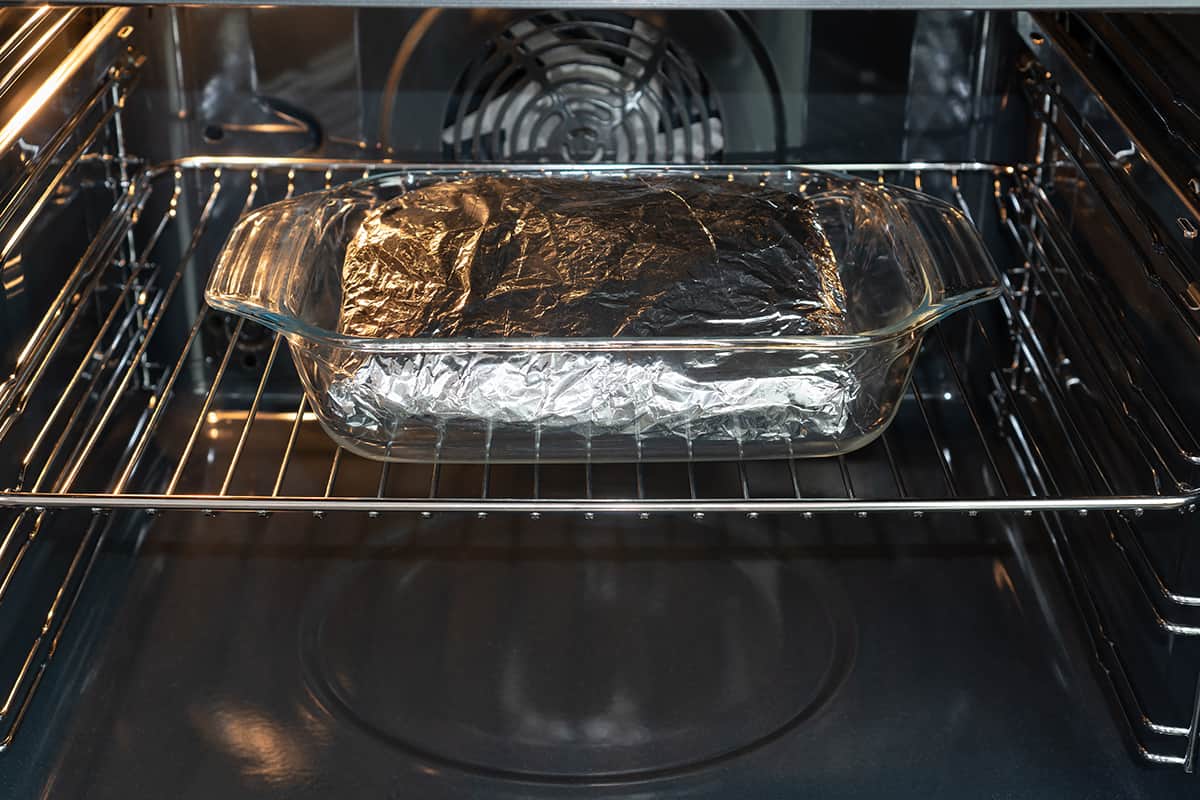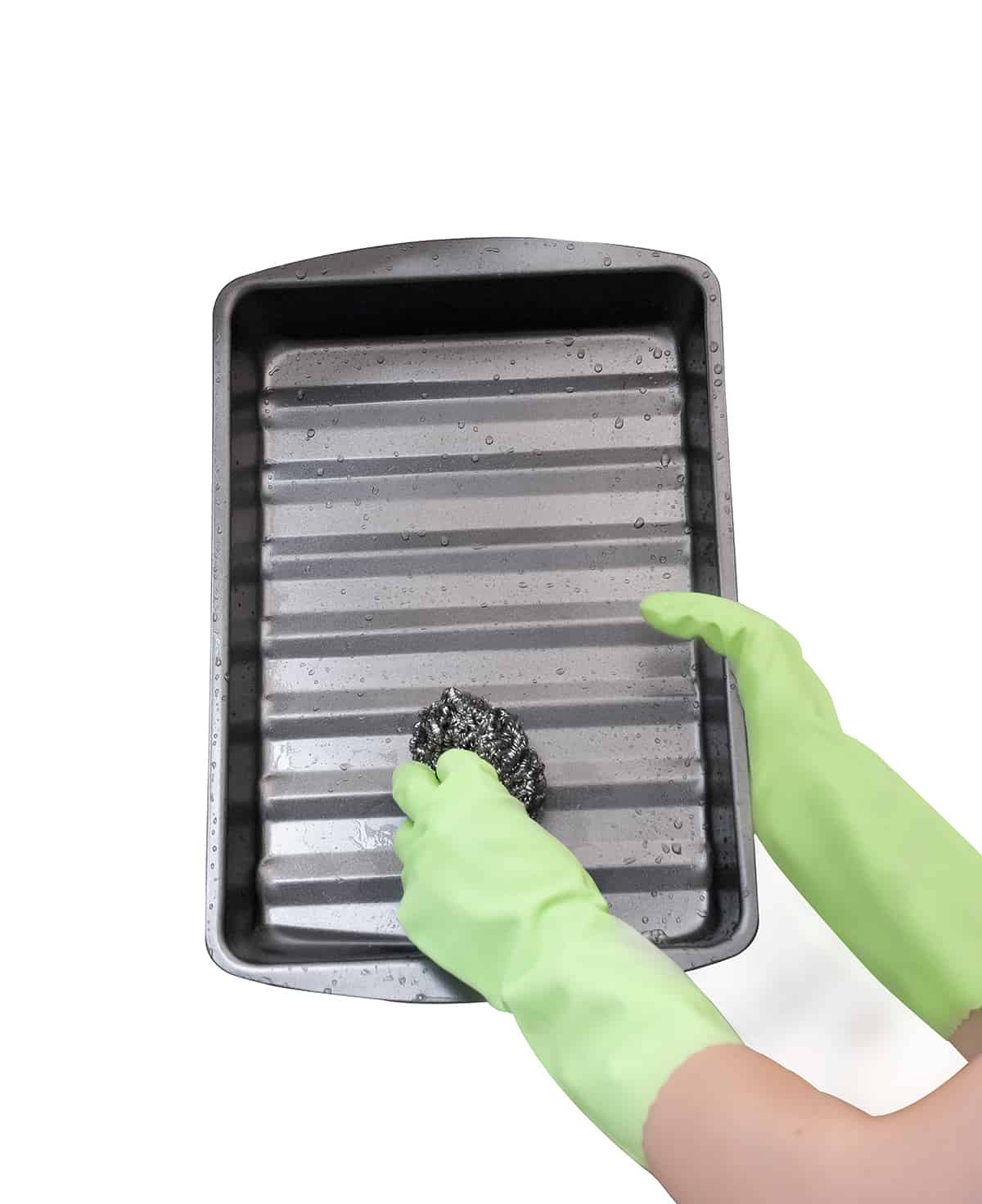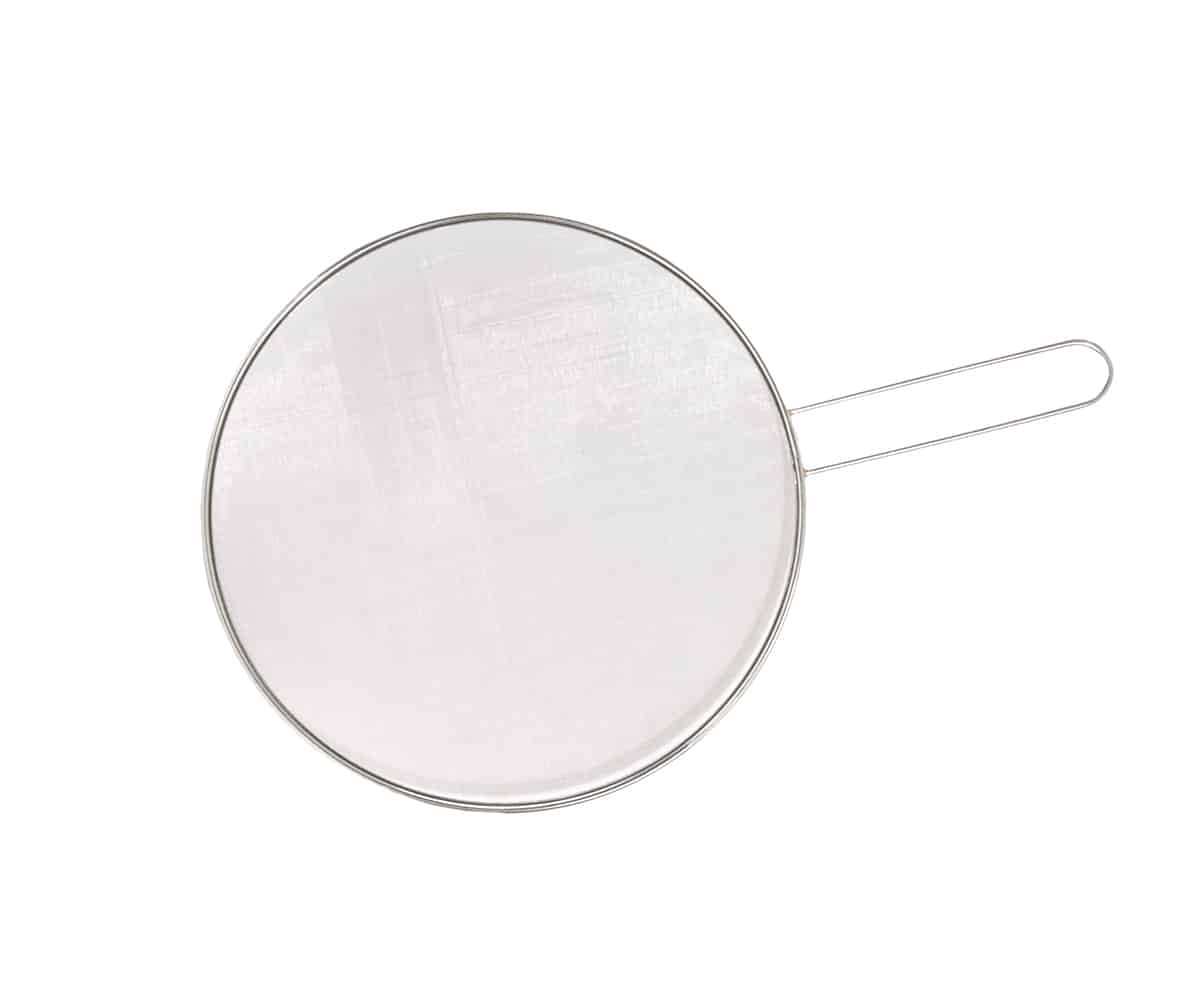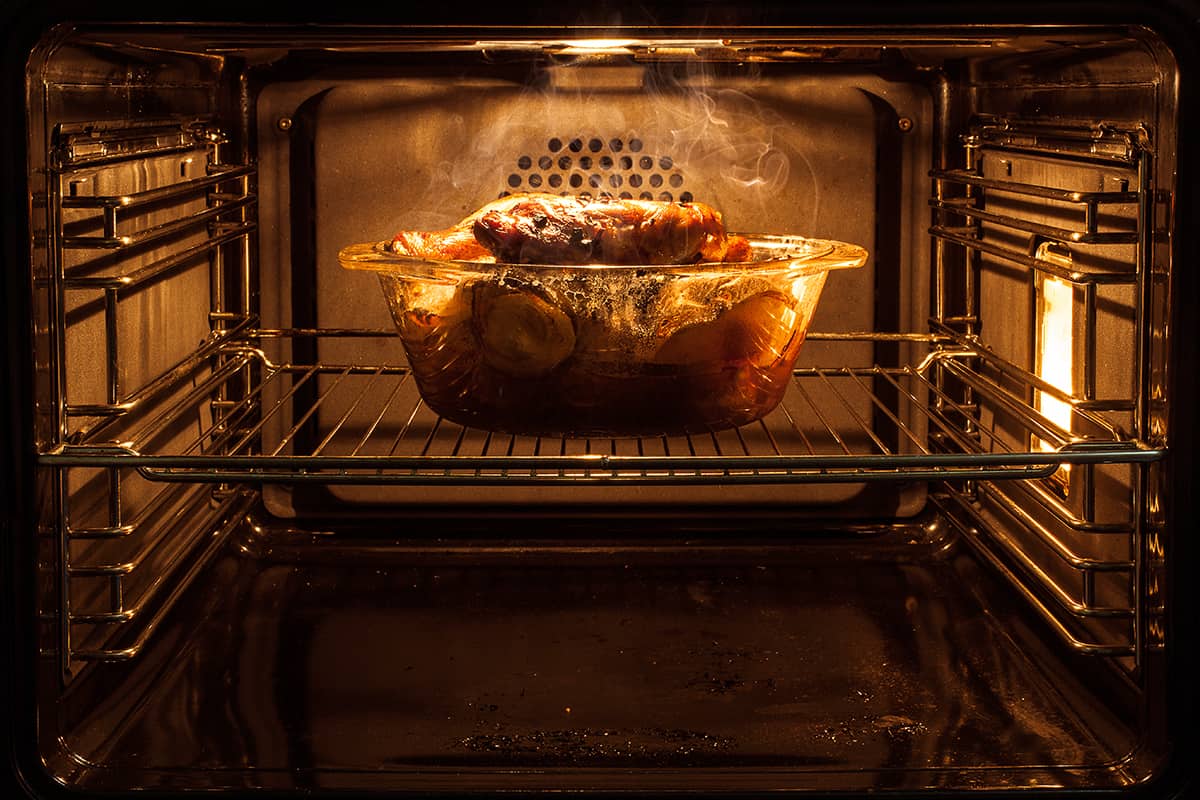Cleaning the oven is regarded as one of the worst tasks we have to routinely perform in our homes. This laborious job can be time-consuming and require quite a bit of elbow grease. What makes it even more excruciating is the fact that just hours after you’ve cleaned your oven to a sparkling shine, you have to cook in it again, and before you know it your pristine appliance is covered in grease.
If you want your oven to last longer in between cleans, then the best thing to do is simply prevent splatter from happening. One impractical way to keep the oven clean is to simply not use it, but if you are a fan of home-cooked meals, we have a number of tips to help prevent oven splatter in your kitchen.
People who have consistently cleaned ovens without constantly cleaning them tend to use a handful of tactics. These include using oven liners, cooking in sealed containers, and using baking trays to catch drips.
Here we take a closer look at the best preventative measures to keep your oven clean, so you can spend more time doing the things you love.
Cook in Containers

Cooking oven food in a sealed container is by far the best method to use if you want to prevent splatter in the oven. When cooking foods such as casseroles, pasta bakes, or roasting joints of meat, the high temperatures in the oven cause any liquid or fat in the food to evaporate. To the naked eye, this simply looks like steam, but in actual fact, it is very fine droplets of airborne grease.
These droplets will settle on the walls, racks, and heating elements inside your oven, and once dried they will usually take on a white color and become hard. If these droplets of fat and grease aren’t cleaned out before you use the oven again (and let’s face it, who cleans the oven between each meal?), then when the oven gets to a high temperature again, the droplets of fat will liquify, drip down the walls of the oven and the process will be repeated.
If the grease is left for long enough in the oven, it will become blackened and baked onto the surfaces of the oven, and that’s when it becomes particularly difficult to clean off. It’s easy to see from this how an oven gets dirty very quickly, even when you cook carefully and avoid spills.
The only way to prevent airborne grease droplets inside your oven is to cook foods in an enclosed container. A casserole dish with a lid works really well, or you could wrap baking trays with a layer of aluminum foil. By containing the cooking foods, there will be no opportunity for splatter to reach the surfaces of the inner oven, therefore preventing the need for the oven to be cleaned.
Use Oven Liners
Oven liners are sold in grocery stores and you can also pick them up from dollar stores. These are essentially large trays made from thick aluminum foil. They have lipped edges to prevent any drips from spilling over the edge, but they are also shallow enough to fit beneath the heating element in an oven.
Oven liners are designed to be placed on the very floor of the oven, underneath the heating element of electric ovens. This means that any drops of grease or fat cannot settle on the floor of the oven, however, the heating element itself is not protected so this can still get dirty. If you want to protect the heating element from splatter, you can use an oven liner on the lower rack of your oven instead. This will catch any spills from food that is cooked on the top rack, but it can interfere with air circulation in the oven.
The great thing about oven liners is that they are disposable. This means you can leave them inside the oven to protect your surfaces until they are reasonably soiled, and then you can simply throw them away; no cleaning is required. The disposable nature of oven liners does however mean that you’ll need to keep buying them to replace the ones you have used.
The main drawback of oven liners is that they don’t actually prevent oven splatter, instead they catch oven splatter so that it doesn’t make a mess of your oven. Since oven liners are only used at the base of the oven, they cannot help to prevent splatter from reaching the side walls of the oven, or the ceiling of the oven.
Create Drip Trays

Any baking tray or cookie tray can be used as a drip tray. All you need to do is keep an empty baking tray on the bottom shelf of your oven, and this will catch any drips or downward splatter from the foods cooking on the middle or top shelves in the oven. This is essentially a more permanent version of an oven liner, so it offers a similar solution.
A baking tray used as a drip tray will not help to prevent splatters of grease or food from reaching the sides or top of the oven, but it will help to keep the bottom of the oven clean, which is often the part that gets the dirtiest. Unlike disposable oven liners, you won’t need to continually buy new baking trays to use as drip trays, but you will have to clean them.
Ideally, you should put your baking tray through a dishwasher cycle once a week, because this will prevent the grease and fat from burning onto the tray and becoming stubborn to remove.
Utilize Aluminum Foil
When trying to protect your oven from splatters of food or grease, aluminum foil is your best friend. You can use this to cover food to stop it from splattering, and you can also use it to line baking drip trays so they won’t be so difficult to clean.
Instead of having to scrub your drip trays, the aluminum foil will catch the grease and you can simply throw this into the trash and line the baking tray with a fresh sheet of aluminum foil before inserting it back into the oven.
Use Splatter Guards

If you find that splatters from your stovetop extend so far that they settle on the knobs of your oven, you can prevent this by using splatter guards. These are purpose-designed kitchen accessories made from steel mesh. They are placed over the top of a pan while you are cooking, and will prevent any grease splatters from getting out of the pan.
They can be cleaned in the dishwasher, or you can soak them in hot, soapy water to remove built-up grease or fat. These are inexpensive items that are flat, and therefore take up little storage space in the kitchen, and they can be really helpful for keeping grease, fat, and food splatters contained.
This is great for protecting the knobs of your oven, as well as the oven door, and it will also keep the surface of your stove top free from spills so you won’t have to clean it as frequently.






